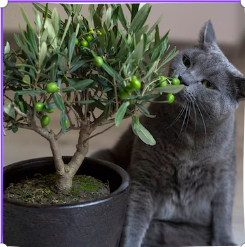
The Truth About Catnip: Myths vs. Facts
Share
Catnip, also known as Nepeta cataria, is a herb from the mint family that has a peculiar effect on many cats. When exposed to catnip, some felines display behaviors ranging from rolling and rubbing against it to an apparent state of euphoria. Catnip has fascinated cat owners and researchers alike, leading to a variety of myths and misconceptions surrounding its effects. In this blog, we'll unravel the truth about catnip by examining the most common myths and presenting the facts supported by scientific research.

Myth 1: All Cats Respond to Catnip
Fact: While it's true that the majority of cats exhibit a response to catnip, not all felines are affected by it. The sensitivity to catnip is hereditary, and approximately 50-75% of cats possess the genetic predisposition to react to it. Kittens do not usually respond until they reach around six months of age, as the sensitivity develops with sexual maturity. Additionally, older cats may become less responsive to catnip over time.
Myth 2: Catnip is Addictive for Cats
Fact: Catnip is not addictive for cats. The active ingredient in catnip, nepetalactone, triggers a behavioral response in susceptible cats but does not create a physiological dependency. After exposure, cats may require a break before responding again, as they build a temporary resistance to the effects of catnip. The response to catnip is a natural reaction and does not lead to addiction or withdrawal symptoms.
Myth 3: Catnip is Unsafe for Cats
Fact: Catnip is considered safe for cats and not toxic. When cats consume catnip in small amounts, such as chewing on fresh leaves, it is generally harmless. However, excessive ingestion may cause mild gastrointestinal upset, so offering catnip in moderation is advisable. Additionally, pregnant cats should avoid catnip, as it may stimulate uterine contractions.
Myth 4: All Forms of Catnip Have the Same Effect
Fact: Catnip is available in various forms, including dried leaves, sprays, and toys. While the active compound, nepetalactone, remains the same, the intensity of the response may differ depending on the form and quality of the catnip. Some cats may show a stronger reaction to fresh or dried catnip leaves, while others may prefer catnip-infused toys or sprays. It's worth experimenting with different forms to find what stimulates your cat's interest and response.
Myth 5: Catnip is the Only Plant that Affects Cats
Fact: Catnip is the most well-known plant that affects cats, but it is not the only one. Other plants have a similar effect on felines, such as silver vine (Actinidia polygama) and valerian root (Valeriana officinalis). These plants contain compounds that elicit responses similar to catnip in cats that are sensitive to them. Like catnip, the reactions to these plants vary among individual cats.
Myth 6: Catnip Is Only for Playful Cats
Fact: Catnip can stimulate playful behavior in cats, but its effects are not limited to playfulness. Some cats may become more calm and relaxed when exposed to catnip, while others may exhibit more exploratory behaviors. The response to catnip is individualized, and the effect can vary from cat to cat. It's important to observe your cat's behavior when exposed to catnip to determine how it affects them personally.

Conclusion:
Catnip, with its intriguing effects on cats, has long been a subject of curiosity and speculation. By debunking common myths and presenting the facts supported by scientific research, we can better understand catnip's true nature. While not all cats respond to catnip, those that exhibit a range of behaviors can vary from playful to calming. Catnip is not addictive or unsafe for cats when used in moderation. Different forms of catnip may elicit varying responses, and other plants like silver vine and valerian root can also affect cats in similar ways. Recognizing that individual cats may develop a temporary tolerance to catnip after repeated exposure is crucial. Understanding the truth about catnip empowers cat owners to make informed decisions when introducing it to their feline companions, enhancing their playtime and overall well-being.
